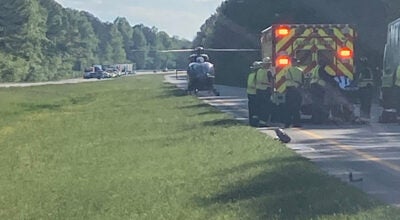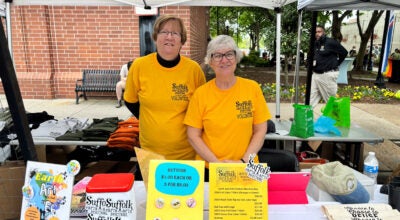Gang awareness forum draws hundreds
Published 9:44 pm Wednesday, January 28, 2009
A crowd of hundreds sat silent in the King’s Fork Middle School auditorium Wednesday as Suffolk Police Sgt. J.D. Buie broke down the realities.
About 20 gangs currently operate in Suffolk. Of those, at least two are in North Suffolk, where many residents tend to think they are immune from gang activity, he said. About a dozen are in a semi-circle around the downtown business district. Most are affiliated with national gangs such as the Bloods or the Crips, but some are “homegrown” and not yet associated with a national group.
Children are being recruited at younger and younger ages, he said. Children join gangs as a substitute for family, for friendship, economic benefit from selling drugs and weapons, power, excitement, fear of rival gangs, status, security and “love.” Gangs in Suffolk have run innocent people out of public parks, committed numerous murders, attempted murders, and malicious woundings.
Although Suffolk’s gang problem isn’t as bad as that of other cities, it still is a reality. Hundreds gathered at the gang awareness forum on Wednesday, hosted by the Suffolk Commonwealth’s Attorney’s office and the Suffolk Police Department Neighborhood Enforcement Team, to take the first steps toward combating the problem – overcoming denial and becoming educated.
The forum included the first-ever public showing of a video, made by Virginia Attorney General Bob McDonnell, documenting actual gang activity in Virginia.
“We sell drugs, we shoot people,” said Tony G., identified in the video as a gang member. “You either go to jail, or you go to hell.”
The video included stories from current and former gang members, police officers, parents and other community members who have experience in the fight against gangs. Video and photos confiscated from gang members in Virginia showed fights, beatings, shootings and other gang activity.
One trauma surgeon at the VCU Medical Center in Richmond told the story of a gang member that he treated in his emergency room. The first time he came to the hospital, the gang member had a gunshot wound in the neck. Although doctors initially didn’t think the man would make it, he came through and went back out on the streets. Two months later, the man was back, this time with a gunshot wound to the abdomen. The gang member had to have a colostomy bag, but was out on the streets again. Six months later, he received a gunshot wound to the head, from which the surgeon couldn’t save him. The man died in the operating room.
A former gang member on the video, Christopher Robinson, told the story of how he and his gang would hang out at clubs, skating rinks, and anyplace else they could establish as their “territory.”
One night, Robinson and his gang got into a fight with a rival gang. Robinson went to his car, got a gun and fired a warning shot into the air. That shot set off a barrage of weapons being fired in his direction, and he was hit several times before he could make it back to his car.
His next memory is being rolled through hospital halls on a stretcher, with his anxious mother behind him, questioning the doctor.
“I don’t think he’s going to make it,” he heard the doctor tell his mother.
Robinson, however, did make it. However, he will be in a wheelchair for the rest of his life, has to wear adult diapers, and is impotent.
“It cost me so much,” he said, adding that none of his gang “brothers” came to see him in the hospital. “If I could, I’d change it all right there.”
After the video, Suffolk Police Sgt. J.D. Buie told of the gang realities in Suffolk. Since the Neighborhood Enforcement Team (NET) was founded in March 2007, the team has made more than 500 criminal arrests, charged more than 100 gang members or associates with more than 300 criminal offenses, including 28 criminal gang participation charges, and held more than 300 gang awareness classes for community groups.
Buie told community members to be on the lookout for signs of gangs in their children or neighborhood children. Some such signs are:
Changes in appearance, behavior, friends or language
Bandanas, especially when they are all the same color
Tattoos, especially those for which parents didn’t give permission
Withdrawal from everyday activities
Graffiti on personal items
Displays money or property
Suddenly owns expensive clothes not purchased by family members
Use of drugs and alcohol
Possession of weapons.
Signs of gangs in your neighborhood are:
Graffiti on walls, signs, street, etc. (Call Suffolk Police so they can photograph and document before having it removed.)
Groups of young people hanging out in the same place, wearing the same color clothing, making hand signs and having similar symbols on clothing or personal items
Increases in crimes, especially shootings, stabbings, mob assaults, drug crimes, etc.
What parents can do to help keep their children out of gangs:
Spend time with your child
Forbid gang-related clothing and markings
Know their friends and friends’ parents
Monitor their favorite music and TV programs
Be involved with school and teachers
Suggest wholesome activities
Share information, even if you’re not sure what it means, with police
Examine personal items and bedroom for signs of gang activity
Promote gang awareness.






